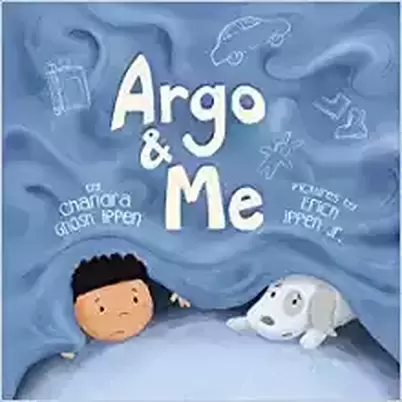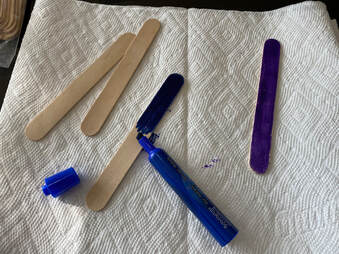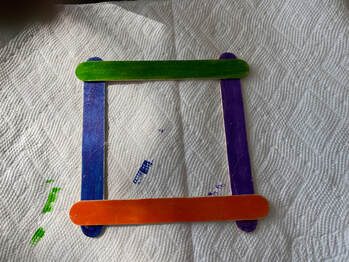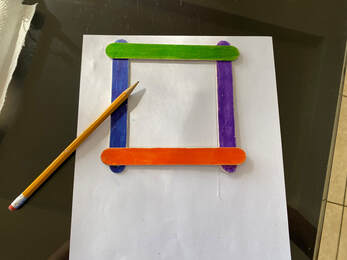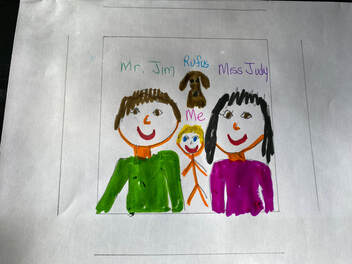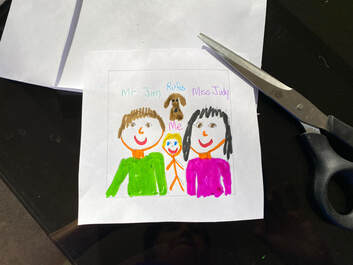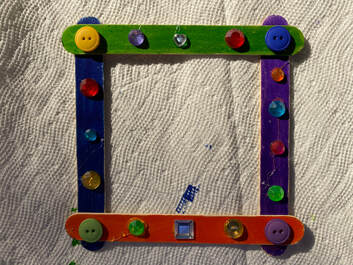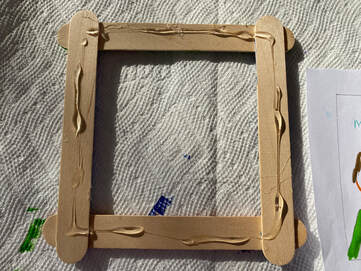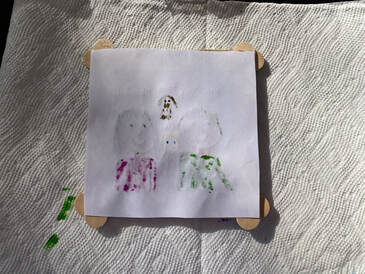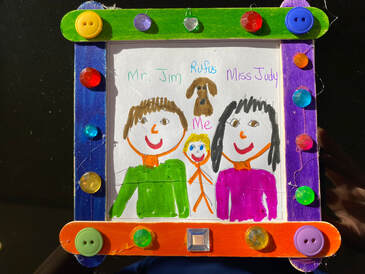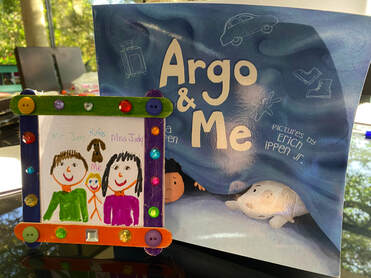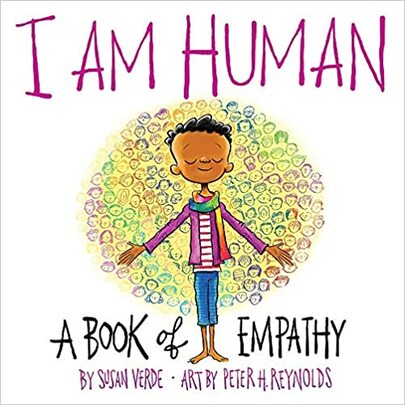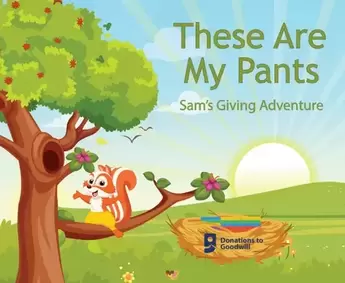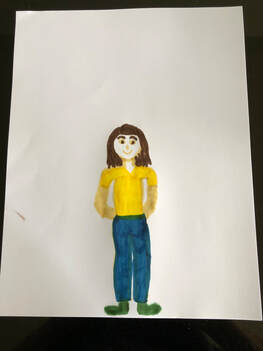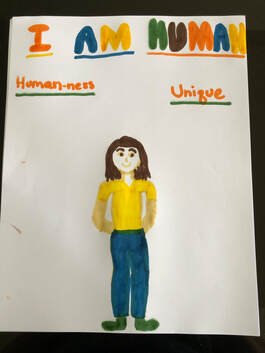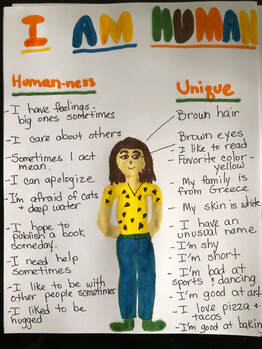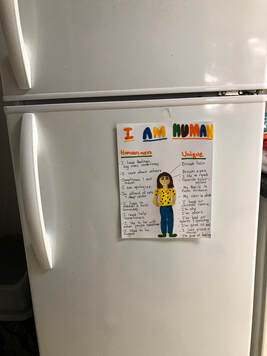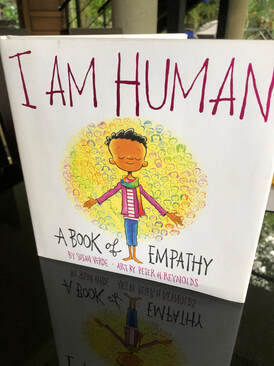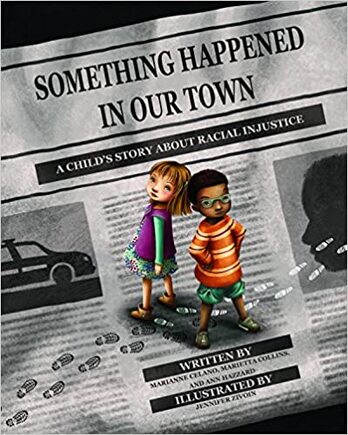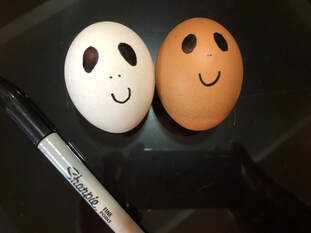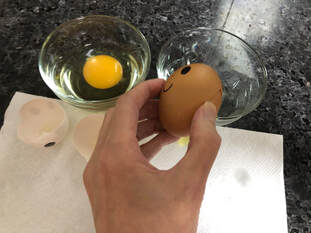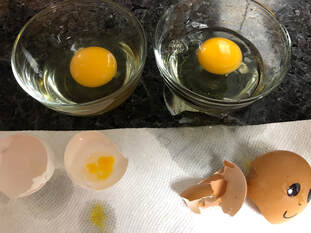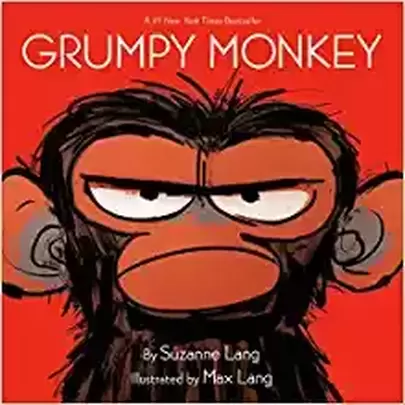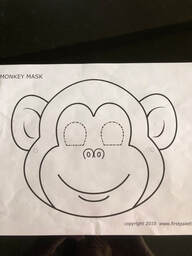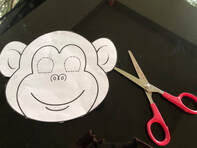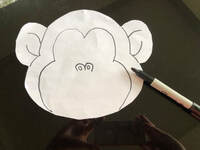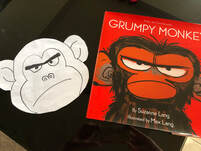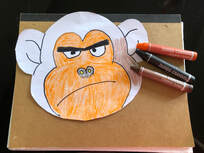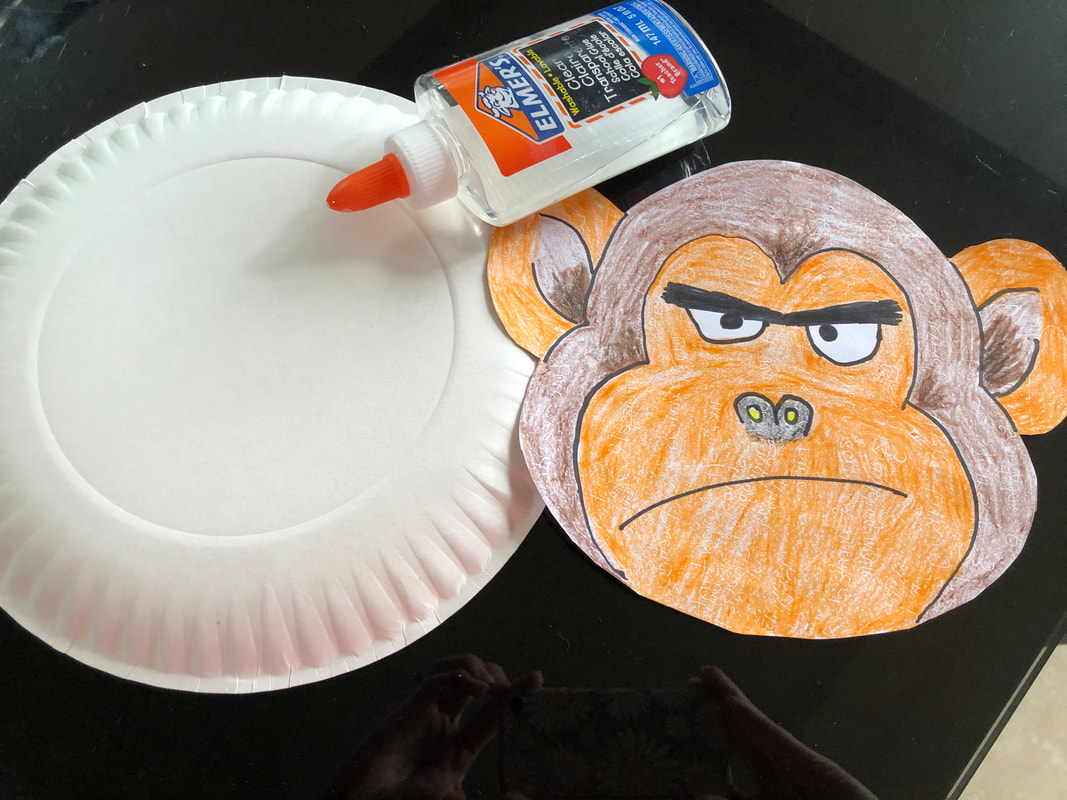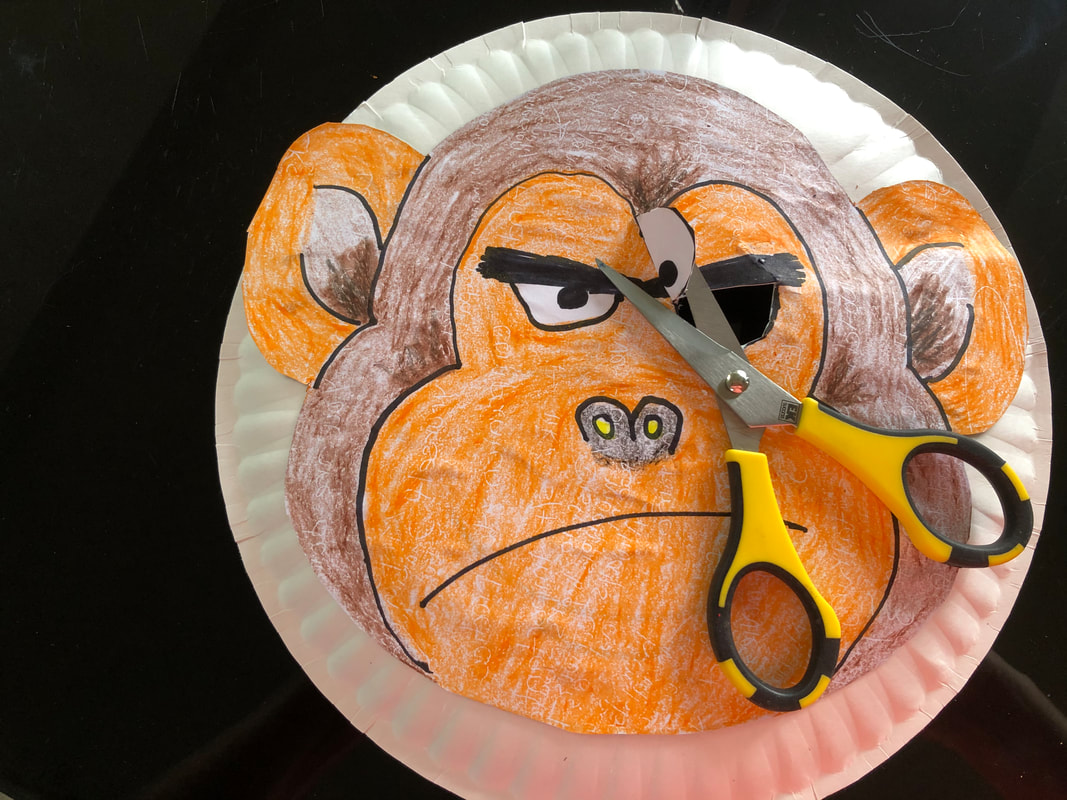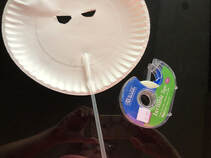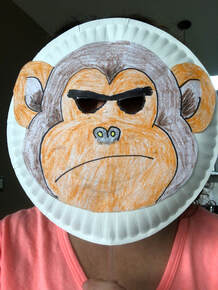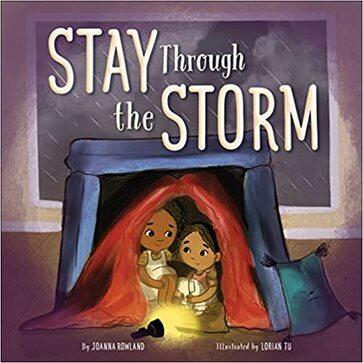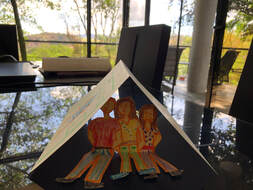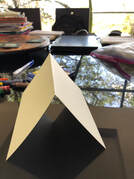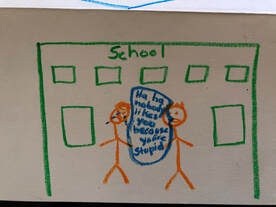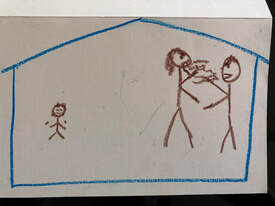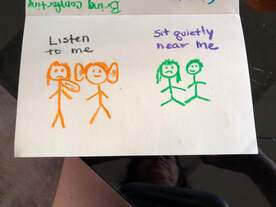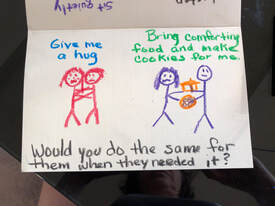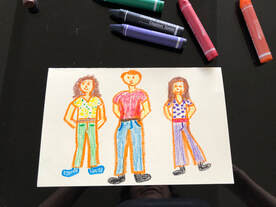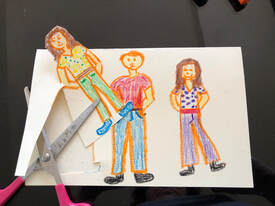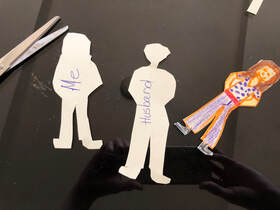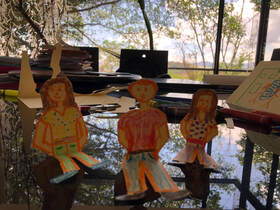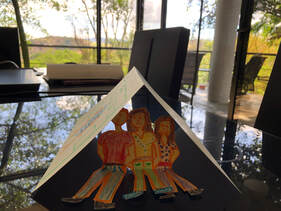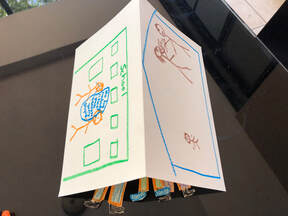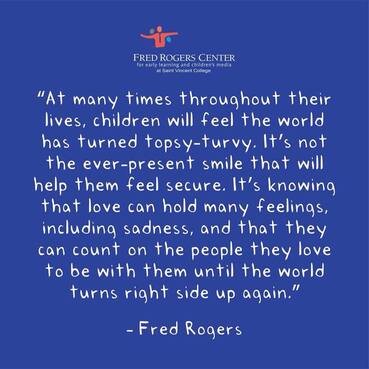A Book Review of Argo & Me
Chandra Ghosh Ippen, the author, expertly provides emotional distance of these heavy topics by focusing on the experience of caring for a rescue dog. This makes the story more palatable for the young child. She gently weaves the shared experience of the boy into the story, as follows. "People I lived with before had big problems and didn't always take good care of me." The illustrations, in gray, faded colors, show the reader some of the negative experiences of the boy. This brings the reader to not only feel compassion for the dog, but for the boy also. This book serves as an excellent model for compassion and understanding when dealing with a child or a dog, with a history of traumatic experiences. Child and adult readers alike, will feel their heart plunge into deep empathy when reading this book. Ms. Ippen stresses the importance of gentleness, observation, listening skills and taking time and patience to earn the trust of someone with past hurts. "People had not always been kind. Some people had hurt him, and Argo didn't know that we were different." Zeze and Paul, the animal shelter staff, represent kind foster parents of Argo. In dealing with Argo's intense fear, they get down at his level and gently wait while playing soft music. This eventually lures Argo to start to trust and move toward them on his own. What great modeling of empathic caregivers! Argo & Me provides examples of many fears, more common ones like thunderstorms, and unique ones based on personal experiences, like boots, or in the boy's case, suitcases. Suitcases reminded the boy of the sad goodbyes and signified to him another move. But with time and repeated positive experiences, the boy learned that suitcases were for fun trips! This illustrates the hopefulness of being able to change and put some fears to rest when in a positive environment. Later in the story, the boy becomes angry with Argo for chewing on his stuffed animal. Argo reacts with fear and sadness. The family notices that bad moods may remind Argo of bad days in his past. The boy was able to return to Argo later and repair the situation. This scene is significant in two ways. One is the crucial concept that anger does not have to mean loss of love or connection. This is part of learning to feel safe in a secure environment. The second point is that there is meaning behind acting out behavior. Reacting with anger is normal, although taking a deep breath and working on understanding the meaning behind it, is a kinder, more effective way to handle these situations. Another topic that the book addresses that I value deeply, is keeping past positive relationships as much as possible in the lives of these children. The family ran into Zeze and Paul at the dog park. Argo enjoyed sharing memories with his past family in the company of his current family. Setting up these visits can help the child feel whole by combining parts of their past lives with the present. It can also model positive loss, as shown in the following quote: "Even when they're not with us, they live in our hearts." If you pay close attention, you can surmise that the boy was adopted by a single dad. This is a great message of the possibilities of finding love in non-traditional families. The framed photos on the last spread of the book, displaying the boy's new life with past connections, ends the story on a beautiful note. This leaves the reader with feelings of hopefulness that, even if you had a rough start on life, you can find love and connection in your future. The illustrations, by Erich Ippin Jr., reflect the messages and moods of the story. The soft shades of blue add to the feelings of gentleness and compassion. The sad moments are colored in gray and dull hues, while the happy moments are reflected in bright shades. The illustrations are fun and will appeal to young children. To purchase this book or check out other books from this author, click HERE. An Activity Idea for Argo & MeMaterials: -Large Craft Sticks -Strong glue -white paper or cardstock -Markers -Pencil -Decorating options (jewels, glitter glue, buttons, small stickers, etc.)
2 Comments
A Book Review of |
| I Am Human A Book of Empathy Written By: Susan Verde Illustrated By: Peter H. Reynolds Published By: Abrams Books for Young Readers Recognizing our connection to each other through our humanity and empathizing with the plight of others is key to making this world a better place. I Am Human introduces these concepts to the youngest among us. It has become clear through this pandemic and the Black Lives Matter movement that our culture is lacking empathy and the ability to put ourselves in someone else's shoes. Teaching our children the importance of human connection, acceptance and empathy towards others will go a long way in improving our culture. The ability to care about the impact of our actions and behaviors on others is crucial. |
I Am Human sends an important message to all of us, but is most appropriate for children ages 3-8. Susan Verde skillfully weaves many layers into this simple book.
The larger take away is that we are all human. This sounds obvious, but the reality in this world is that is not how we treat each other. We are all human regardless of the color of our skin, different abilities, the country we are from, our religion or if we are from a poorer or richer part of town. We are all connected by our human-ness and are all unique in our own way. This book celebrates the human potential of feeling empathy and compassion toward ourselves and others.
The smaller messages relate to the fact that the human condition is imperfect. We all have our strengths and weaknesses and we should respect those things in ourselves and others. I Am Human is a hopeful book in that it portrays the journey of being human as having challenges and possibilities. We all have feelings that we express in different ways. Part of being human is being afraid of things sometimes or feeling sad occasionally or hurt or angry about something somebody said to you. We have the ability to make choices. We can apologize for our mistakes and try to do better. We can choose to be helpful to others if they are struggling or kind to ourselves.
The art by Peter H. Reynolds is simple, yet beautiful. It shows the connection between others and hopefulness of the human condition. The book includes a Loving/Kindness Meditation at the end.
I recommend this book for all children to teach them these human ideals from a young age and give them the reassurance and knowledge that they are part of something bigger and are not alone. It reinforces a sense of community that will help all of us get through difficult times. You can find this book and others in the I AM Series by Susan Verde and Peter H. Reynolds on her website at https://www.susanverde.com/susans-books.
As an example of showing empathy toward others, I recommend this follow up book that reinforces the joy of helping others.
The larger take away is that we are all human. This sounds obvious, but the reality in this world is that is not how we treat each other. We are all human regardless of the color of our skin, different abilities, the country we are from, our religion or if we are from a poorer or richer part of town. We are all connected by our human-ness and are all unique in our own way. This book celebrates the human potential of feeling empathy and compassion toward ourselves and others.
The smaller messages relate to the fact that the human condition is imperfect. We all have our strengths and weaknesses and we should respect those things in ourselves and others. I Am Human is a hopeful book in that it portrays the journey of being human as having challenges and possibilities. We all have feelings that we express in different ways. Part of being human is being afraid of things sometimes or feeling sad occasionally or hurt or angry about something somebody said to you. We have the ability to make choices. We can apologize for our mistakes and try to do better. We can choose to be helpful to others if they are struggling or kind to ourselves.
The art by Peter H. Reynolds is simple, yet beautiful. It shows the connection between others and hopefulness of the human condition. The book includes a Loving/Kindness Meditation at the end.
I recommend this book for all children to teach them these human ideals from a young age and give them the reassurance and knowledge that they are part of something bigger and are not alone. It reinforces a sense of community that will help all of us get through difficult times. You can find this book and others in the I AM Series by Susan Verde and Peter H. Reynolds on her website at https://www.susanverde.com/susans-books.
As an example of showing empathy toward others, I recommend this follow up book that reinforces the joy of helping others.
| These Are My Pants Written by: Jane and Katelyn Plank Ilustrated by; Aniqa Ashfaq This is a self-published book, that is not only about the virtue of giving to others, but also sets an example for giving as a portion of the book proceeds go towards Goodwill. I encourage you to purchase this book and use it as an example of being human and showing empathy toward others. |
Reading These Are My Pants provides an excellent opportunity to put the concept into action and have your child participate in an act of giving to others. It could be something of theirs that they are willing to give up to help others, something new that you buy together, or a service that the child can provide in the mission to help another human. Share the joy of giving with your child!
To learn more about These Are My Pants and to purchase the book, go to their website at https://www.plankbooks.com/.
To learn more about These Are My Pants and to purchase the book, go to their website at https://www.plankbooks.com/.
Activity Idea for I Am Human A Book Of Empathy
We are all connected with our human-ness, even though we are all unique in many ways. My suggestion is to pose two questions to your child after reading the book.
What makes you human?
What makes you unique?
Use those ideas to complete the following activity.
Materials needed:
8.5 x 11 paper or a roll of paper cut to the size of the child
markers or crayons
pencil
Directions:
If you have a roll of paper that you could have the child lay on and trace them, this would be the funnest way to continue. I don't have a paper roll or a child with me, so I will draw the child on a regular size paper. Either way is fine.
What makes you human?
What makes you unique?
Use those ideas to complete the following activity.
Materials needed:
8.5 x 11 paper or a roll of paper cut to the size of the child
markers or crayons
pencil
Directions:
If you have a roll of paper that you could have the child lay on and trace them, this would be the funnest way to continue. I don't have a paper roll or a child with me, so I will draw the child on a regular size paper. Either way is fine.
| 1. Have child lay on the paper on his/her back and trace around their body with a pencil. Then have child draw on and color their hair, eyes, clothes, etc. Or draw child outline on sheet of paper and have them color in details of themselves. Encourage them to make it look like their unique selves with hair color, skin color, eye color etc. Make sure to leave room around the drawing for writing. 2. Write I AM HUMAN at the top of the page and label one side with human-ness and the other, unique. 2. Around the portrait of themselves, discuss and write the things that make them both human and unique. The photo shows some examples. 3. Hang completed project on refrigerator or wall so they can see often. 4. Share with the child how you are different and the same as them. Have fun! |
A Book Review of Something Happened in Our Town- A Child's Story About Racial Injustice
| Something Happened in Our Town A Child's Story About Racial Injustice Written By: Marianne Celano, Marietta Collins, Ann Hazzard Illustrated By: Jennifer Zivoin Published By: Magination Press This current political climate, as stressful as it has been and continues to be, has awarded us an opportunity. An opportunity to be a part of stopping the cycle of systemic racism by teaching our children. As parents, teachers and therapists, we have been handed a teaching moment that comes with a responsibility to prepare our kids for a better future for ALL people. |
The recent incidents of police brutality toward people of color, and the treatment they receive that is very different from their white counterparts, is currently shining a light on a social issue that has been, and continues to be, a crisis within our communities. The news of the protests and the uptick of conversations around racial issues are, in fact, affecting our kids. They are watching and they are listening. As adults, we want to shield our kids from the ugly realities of the world. White people have had the privilege of not discussing race with their kids. This is part of the problem that needs to change. Therefore, it is crucial to have these discussions and this book is a perfect starting point.
One of the most important and effective things that we can do is to teach our children to pay attention to the world around them, to watch out for how others are treated and to stand up for themselves and others. Our children are our hope for a better future of equality for ALL people. We need to help them understand sameness and celebrate difference among people. This is our opportunity to check ourselves on how we are perpetrating the ongoing biases and disregard for people different from ourselves. We can learn along with our children.
Starting as young as 3 years old, numerous children of color that I encountered in my practice, verbalized to me that they thought they were ugly because of the color of their skin. There were also those who said they wanted to be white because that was better. Our society is teaching our precious children these falsehoods and it is our responsibility to make it stop!
This post may seem that it is directed more toward white children, but it is directed to all children. White children, however, have the most to learn about this issue due to a long history of disregard and discrimination of people of color perpetrated from their white heritage. White children are crucial in using their privilege to change the future. It is never too early to start talking about race. It is important to make this an ongoing conversation and to point out injustices that you or they may witness. Expose your children to people of color through real life activities, literature, music, etc.
Something Happened in Our Town was written in 2018, but was relevant long ago and, unfortunately, continues to be relevant to the experiences of today. It was written for children ages 4-8, however, I believe it is a learning tool for those from ages 4-99. Something Happened in Our Town offers a brief history of slavery and segregation, describes exactly who white and black people are, brings police brutality and racial inequality into light and encourages children to stand up for others and be allies. That is a lot for one children's book to cover, but it addresses these topics beautifully and with compassion.
The authors skillfully pull in the perspectives of a white and a black family, which makes the book relevant for all children and helps us see the perspective of the "other." After all, that is a big piece we are lacking as a society. The authors do not shy away from the big issues, but address them in an age appropriate, direct matter. The illustrations reflect the intensity of the subject matter and include powerful silhouettes that have a strong emotional impact throughout the book. Anger surrounding racial issues is addressed in the story and the character explains how it can be used as momentum to improve the world.
The conclusion pulls together what the children have learned through the conversations with their families. The two children, white and black, are in school when an immigrant boy arrives as a new student to their class. They notice how other students are mistreating the new student, and stand up for him. A lesson we all need to learn and develop the courage to uphold. Those children were the start of a better pattern in their school, which can carry over to the larger community over time.
The authors have provided a note to parents and caregivers at the end of the book with resources to help us continue to have these conversation with our children.
Below I have activity and discussion ideas to take this conversation to a deeper level.
One of the most important and effective things that we can do is to teach our children to pay attention to the world around them, to watch out for how others are treated and to stand up for themselves and others. Our children are our hope for a better future of equality for ALL people. We need to help them understand sameness and celebrate difference among people. This is our opportunity to check ourselves on how we are perpetrating the ongoing biases and disregard for people different from ourselves. We can learn along with our children.
Starting as young as 3 years old, numerous children of color that I encountered in my practice, verbalized to me that they thought they were ugly because of the color of their skin. There were also those who said they wanted to be white because that was better. Our society is teaching our precious children these falsehoods and it is our responsibility to make it stop!
This post may seem that it is directed more toward white children, but it is directed to all children. White children, however, have the most to learn about this issue due to a long history of disregard and discrimination of people of color perpetrated from their white heritage. White children are crucial in using their privilege to change the future. It is never too early to start talking about race. It is important to make this an ongoing conversation and to point out injustices that you or they may witness. Expose your children to people of color through real life activities, literature, music, etc.
Something Happened in Our Town was written in 2018, but was relevant long ago and, unfortunately, continues to be relevant to the experiences of today. It was written for children ages 4-8, however, I believe it is a learning tool for those from ages 4-99. Something Happened in Our Town offers a brief history of slavery and segregation, describes exactly who white and black people are, brings police brutality and racial inequality into light and encourages children to stand up for others and be allies. That is a lot for one children's book to cover, but it addresses these topics beautifully and with compassion.
The authors skillfully pull in the perspectives of a white and a black family, which makes the book relevant for all children and helps us see the perspective of the "other." After all, that is a big piece we are lacking as a society. The authors do not shy away from the big issues, but address them in an age appropriate, direct matter. The illustrations reflect the intensity of the subject matter and include powerful silhouettes that have a strong emotional impact throughout the book. Anger surrounding racial issues is addressed in the story and the character explains how it can be used as momentum to improve the world.
The conclusion pulls together what the children have learned through the conversations with their families. The two children, white and black, are in school when an immigrant boy arrives as a new student to their class. They notice how other students are mistreating the new student, and stand up for him. A lesson we all need to learn and develop the courage to uphold. Those children were the start of a better pattern in their school, which can carry over to the larger community over time.
The authors have provided a note to parents and caregivers at the end of the book with resources to help us continue to have these conversation with our children.
Below I have activity and discussion ideas to take this conversation to a deeper level.
Activity and Discussion Ideas for Something Happened in Our Town- A Child's Story About Racial Injustice
My first suggestion is to provide many books to children that include different races of people. Provide a variety that discuss the life hardships of people of color, as well as those that have a main character of a different race, feeling and experiencing the same day-to-day things as they do. The idea being understanding sameness and celebrating difference.
In the activity below, I have included many ideas for discussion. This is a difficult subject to discuss with children and these are just some ways to approach this sensitive topic.
Materials Needed
1 brown egg
1 white egg
black marker
2 small bowls
paper towel
In the activity below, I have included many ideas for discussion. This is a difficult subject to discuss with children and these are just some ways to approach this sensitive topic.
Materials Needed
1 brown egg
1 white egg
black marker
2 small bowls
paper towel
| Directions 1. Have the child CAREFULLY draw faces on each of the eggs with a black marker. 2. Ask the child what is the same between the outside of the two eggs. Clue: both are eggs, oval, same texture, etc. Ask them what is the difference between the two eggs. Clue: they are different colors. Ask them if they think they are the same or different inside? 3. Then, check it out to see! Have the child crack one egg into each bowl. Look at the eggs together. Are they the same inside? Compare this to people who have brown skin and white skin. Are all people the same outside? Nope. Are all people the same inside? Yep. Explain that some people, even some adults, even some policemen, don't understand that all people are the same on the inside and they treat people who look different on the outside unfairly. Refer to the policeman in the book. |
Do you think that people with different colored skin should be treated differently? Why? Why not?
So, our job, because we know that people are the same on the inside, is to stand up for those people who may be treated unfairly just because of the color of their skin. Discuss how the kids in the book did this with the new student.
Then, go deeper with the discussion. Why are people different colors?
People are different colors depending on where in the world they, or their ancestors, were born. Discuss where the child's ancestors were born and relate it to the color of their skin. Explain that most white people's ancestors are from Europe or other countries where the people are mostly white. Black people's ancestors are usually from Africa, Haiti, or the Caribbean. There are also people of other colors that come from different places in the world too. (A globe or world map can be helpful with this discussion.) But now, since their ancestors came to this country, many people of different colors are born in America, just like you(if that is true for them.)
Now, let's go even deeper. Should we pretend we don't notice that their skin is a different color?
No, we should celebrate all of our differences. Your skin color depends on where your ancestors are from. For that reason, skin color does make us different in ways that we can celebrate and enjoy about each other.
The fact that most of our ancestors are from different countries can bring with it different traditions like, food, music, art, rituals, religions that different families enjoy about their heritage. We wouldn't have the privilege to enjoy going to Chinese, Mexican, Indian, Moroccan, Ethiopian, or many other kinds of restaurants if people didn't bring these recipes from their native countries. What are some things that our/your family eat or does that have come from where you or your ancestors were born?
Ancestors also bring with them their history of experiences that can make life harder for them and the generations that come after them. One example of this is slavery, like we read about in the book. Many people with black skin had ancestors that were brought to the United States from Africa as slaves. They were treated very poorly by the people who were already here from Europe. Slavery finally ended, but black people still haven't caught up to having the same opportunities or being treated as well as white people.
These discussions don't have to be done all at once. This is the type of discussion that needs to be done repeatedly throughout the life of a child/adolescent/young adult. Children as young as 3 years old are aware of differences of skin color. Nurturing an understanding of others, empathy, and a sense of justice in our children will go a long way in helping to make the world a better place for ALL people.
So, our job, because we know that people are the same on the inside, is to stand up for those people who may be treated unfairly just because of the color of their skin. Discuss how the kids in the book did this with the new student.
Then, go deeper with the discussion. Why are people different colors?
People are different colors depending on where in the world they, or their ancestors, were born. Discuss where the child's ancestors were born and relate it to the color of their skin. Explain that most white people's ancestors are from Europe or other countries where the people are mostly white. Black people's ancestors are usually from Africa, Haiti, or the Caribbean. There are also people of other colors that come from different places in the world too. (A globe or world map can be helpful with this discussion.) But now, since their ancestors came to this country, many people of different colors are born in America, just like you(if that is true for them.)
Now, let's go even deeper. Should we pretend we don't notice that their skin is a different color?
No, we should celebrate all of our differences. Your skin color depends on where your ancestors are from. For that reason, skin color does make us different in ways that we can celebrate and enjoy about each other.
The fact that most of our ancestors are from different countries can bring with it different traditions like, food, music, art, rituals, religions that different families enjoy about their heritage. We wouldn't have the privilege to enjoy going to Chinese, Mexican, Indian, Moroccan, Ethiopian, or many other kinds of restaurants if people didn't bring these recipes from their native countries. What are some things that our/your family eat or does that have come from where you or your ancestors were born?
Ancestors also bring with them their history of experiences that can make life harder for them and the generations that come after them. One example of this is slavery, like we read about in the book. Many people with black skin had ancestors that were brought to the United States from Africa as slaves. They were treated very poorly by the people who were already here from Europe. Slavery finally ended, but black people still haven't caught up to having the same opportunities or being treated as well as white people.
These discussions don't have to be done all at once. This is the type of discussion that needs to be done repeatedly throughout the life of a child/adolescent/young adult. Children as young as 3 years old are aware of differences of skin color. Nurturing an understanding of others, empathy, and a sense of justice in our children will go a long way in helping to make the world a better place for ALL people.
A Book Review of Grumpy Monkey
| Grumpy Monkey Written By: Suzanne Lang Illustrated By: Max Lang Published By: Random House Children's Books Call it psychologist's intuition, but I have a hunch that we have a good number of "grumpy monkeys" swinging around our households these days. I might even guess that all of those "grumpy monkeys" are not little, but some are big, like older siblings, moms, dads, and even grandparents! I could be wrong, but just saying... |
-with constant togetherness,
major changes in routine,
boredom,
fewer emotional and social outlets,
worry about the future,
money issues, etc.,
I would venture to guess that grumpy monkey business is now at an all-time high! In other words, it is likely that we are all going bananas! For that reason, I have decided to review the Grumpy Monkey book this month for all of you "grumpy monkeys" out there (well, and here too!)
Grumpy Monkey is a New York Times bestselling picture book that addresses that vague, all-the-big-feelings-at-once mood of GRUMPINESS. Jim Panzee had a day where nothing felt quite right. His jungle friends noticed his grumpiness, but Jim was in denial and insisted repeatedly, "I am not grumpy!" They pointed out his body language that showed otherwise. Marabou said, "You're all hunched," so Jim straightened his body. Lemur noticed that Jim's eyebrows were all bunched up and snake noticed a frown on Jim's face. Jim changed his body language, but the jungle friends knew that he was pretending. Even though he was trying not to look grumpy on the outside, Jim still felt grumpy on the inside. However, Jim still insisted that he was NOT grumpy.
Sound familiar? Many times we don't notice ourselves feeling or acting grumpy. Children, as well as adults, tend to deny being grumpy when its pointed out. But grumpiness not only affects ourselves, but those around us, and sometimes it's even catchy! Grumpiness is often so many feelings lumped together into one that it is difficult to recognize in ourselves and even more difficult to pinpoint the cause.
The animals couldn't understand why Jim was grumpy because it was such a beautiful day. The jungle friends tried to cheer him up, suggesting a mountain of ideas, but Jim didn't feel like doing anything. All of their suggestions were things that made his friends feel happy, but not Jim, especially not on this day. The efforts of his friends became increasingly annoying and Jim reached his limit. Finally, his mood escalated further and he went BANANAS, screamed at the top of his lungs, "I AM NOT GRUMPY!" and stormed off.
After feeling bad for yelling at his friends and noticing that his friend, Norman, had become grumpy too, Jim finally accepted that he was grumpy. Accepting that feeling for himself, and his friends acknowledging his feeling, when he was ready, was all he really needed to start to feel a little better.
In this book, Suzanne Lang promotes social-emotional learning by showing children the importance of reading other's body language. Another important emotional lesson is that sometimes cheering up is not what we need. Sometimes, we just need to feel grumpy and for that to be okay. Accepting your own and acknowledging other's feelings, when they are ready, can go a long way in being able to sit with your feelings and start to feel better.
The illustrator, Max Lang, does a beautiful job portraying the distinct facial expressions and body language of Jim and his jungle friends. The illustrations are vivid and fun, adding to the enjoyment of the story.
Suzanne and Max Lang have created a series of Grumpy Monkey books that are equally enjoyable. Check them out at https://www.penguinrandomhouse.com/authors/222967/suzanne-lang.
Below I have an activity suggestion to go along with the book!
major changes in routine,
boredom,
fewer emotional and social outlets,
worry about the future,
money issues, etc.,
I would venture to guess that grumpy monkey business is now at an all-time high! In other words, it is likely that we are all going bananas! For that reason, I have decided to review the Grumpy Monkey book this month for all of you "grumpy monkeys" out there (well, and here too!)
Grumpy Monkey is a New York Times bestselling picture book that addresses that vague, all-the-big-feelings-at-once mood of GRUMPINESS. Jim Panzee had a day where nothing felt quite right. His jungle friends noticed his grumpiness, but Jim was in denial and insisted repeatedly, "I am not grumpy!" They pointed out his body language that showed otherwise. Marabou said, "You're all hunched," so Jim straightened his body. Lemur noticed that Jim's eyebrows were all bunched up and snake noticed a frown on Jim's face. Jim changed his body language, but the jungle friends knew that he was pretending. Even though he was trying not to look grumpy on the outside, Jim still felt grumpy on the inside. However, Jim still insisted that he was NOT grumpy.
Sound familiar? Many times we don't notice ourselves feeling or acting grumpy. Children, as well as adults, tend to deny being grumpy when its pointed out. But grumpiness not only affects ourselves, but those around us, and sometimes it's even catchy! Grumpiness is often so many feelings lumped together into one that it is difficult to recognize in ourselves and even more difficult to pinpoint the cause.
The animals couldn't understand why Jim was grumpy because it was such a beautiful day. The jungle friends tried to cheer him up, suggesting a mountain of ideas, but Jim didn't feel like doing anything. All of their suggestions were things that made his friends feel happy, but not Jim, especially not on this day. The efforts of his friends became increasingly annoying and Jim reached his limit. Finally, his mood escalated further and he went BANANAS, screamed at the top of his lungs, "I AM NOT GRUMPY!" and stormed off.
After feeling bad for yelling at his friends and noticing that his friend, Norman, had become grumpy too, Jim finally accepted that he was grumpy. Accepting that feeling for himself, and his friends acknowledging his feeling, when he was ready, was all he really needed to start to feel a little better.
In this book, Suzanne Lang promotes social-emotional learning by showing children the importance of reading other's body language. Another important emotional lesson is that sometimes cheering up is not what we need. Sometimes, we just need to feel grumpy and for that to be okay. Accepting your own and acknowledging other's feelings, when they are ready, can go a long way in being able to sit with your feelings and start to feel better.
The illustrator, Max Lang, does a beautiful job portraying the distinct facial expressions and body language of Jim and his jungle friends. The illustrations are vivid and fun, adding to the enjoyment of the story.
Suzanne and Max Lang have created a series of Grumpy Monkey books that are equally enjoyable. Check them out at https://www.penguinrandomhouse.com/authors/222967/suzanne-lang.
Below I have an activity suggestion to go along with the book!
Activity Idea for Grumpy Monkey
We are going to make a Grumpy Monkey mask, so your child can hold it up when he/she is feeling grumpy and doesn't want to be bothered. They may even lend it to you, or other members of the family, when they notice you are having a grumpy day. Maybe it will help lighten the mood!
Materials Needed:
-printed copy of monkey face from this link https://www.firstpalette.com/pdf/monkeymask.pdf
-black marker
-scissors
-crayons
-glue
-tape
-paper plate
-craft stick or straw
Materials Needed:
-printed copy of monkey face from this link https://www.firstpalette.com/pdf/monkeymask.pdf
-black marker
-scissors
-crayons
-glue
-tape
-paper plate
-craft stick or straw
| Directions: 1. Print out copy of monkey face through link above 2. Cut out monkey face 3. Turn monkey face upside down, trace details of face with only the outline, the nose and the ear details with black marker (you may have to hold it against a window with sunlight to see the lines) 4. Using the book cover as a reference, draw a GRUMPY face on your monkey. Talk about what makes him look grumpy (bunched eyebrow, scrunched eyes, frown) 5. Color the monkey face 6. Turn the paper plate upside down and glue on monkey face 7. Cut out the eyes (Adult may need to use smaller, sharper scissors or X-acto knife for this) 8. Glue or tape stick or straw onto the other side of paper plate 9. Finished project! Hello there Grumpy Monkey!! 10. -Talk to the child about the last time they felt grumpy, when they have noticed you, or someone in the family, feeling grumpy, and how they could tell the other person was grumpy. -Talk about body language, as well as, actions. -Then ask, what do you think was making you or the other person feel grumpy? Have you noticed it more during this pandemic? Why do you think? |
A Book Review of Stay Through the Storm
| Stay Through the Storm Written by: Joanna Rowland Illustrated by: Lorian Tu Published by: beaming books Stay Through the Storm is one of the few picture books for young children that touches on the topics of severe depression, suicidal thoughts and hopelessness. "The Storm" and the darkness in the story can be an analogy for many struggles that children experience, so this book is relevant to all children. It is most appropriate for children ages 3-8. |
Why would we broach the subject of suicide with young children? It's very painful for us to accept that suicide touches lives of young children, but it does. They may have teenage or adult relatives or friends that die due to suicide. They may have suicidal thoughts themselves or may even have made attempts. Even though successful suicides are rare in children below age 10, children as young as 5 years old have successfully committed suicide. Suicidal thoughts at a young age are a major predictor of later successful suicide. Therefore, it is important to address coping with these feelings from a young age. Joanna Rowland, the author, approaches this intense topic in an age-appropriate and gentle manner.
Her theme throughout the book stresses the power of friendship to help us through life's storms. The story helps children understand the importance of reaching out or accepting the help of others when their lives feel full of darkness. "Stay" is a repeated word throughout the dialogue. "Stay" and allow me to care for you. Together we can conquer your hopeless, scared feelings. Tell me about your feelings, I will understand because I am human and I probably felt that way at one time or another too. This will end and we'll get to the other side of it together. If the feeling comes again, I will be here for you then too. This book is an example of humanity at its best.
Through the illustrations, Lorian Tu, portrays hopefulness through vivid colors. The illustration of the fort on the cover and in the book supports the theme that you are safe and protected and can be helped through tough times.
I highly recommend this book for all children, especially those who have been through or are going through dark and difficult times. This gentle, beautiful story provides coping skills, reassurance and hope to the youngest among us.
Check out this author's website for excellent books on mental health and other topics for young children. https://www.writerrowland.com/
Her theme throughout the book stresses the power of friendship to help us through life's storms. The story helps children understand the importance of reaching out or accepting the help of others when their lives feel full of darkness. "Stay" is a repeated word throughout the dialogue. "Stay" and allow me to care for you. Together we can conquer your hopeless, scared feelings. Tell me about your feelings, I will understand because I am human and I probably felt that way at one time or another too. This will end and we'll get to the other side of it together. If the feeling comes again, I will be here for you then too. This book is an example of humanity at its best.
Through the illustrations, Lorian Tu, portrays hopefulness through vivid colors. The illustration of the fort on the cover and in the book supports the theme that you are safe and protected and can be helped through tough times.
I highly recommend this book for all children, especially those who have been through or are going through dark and difficult times. This gentle, beautiful story provides coping skills, reassurance and hope to the youngest among us.
Check out this author's website for excellent books on mental health and other topics for young children. https://www.writerrowland.com/
Activity Idea for Stay through the Storm
Have a discussion with your child after reading the book. The following questions can help.
1. If you were feeling really big feelings like sad, scared, confused, hopeless or worried, who would you want to be with you to help you(can be more than one person)?
2. How would that person(s) know you're having big feelings and that you want them to stay with you?
3. What do you think that person can do with you to help you feel cared about and safe?
4. Who do you think would want YOU with them if they were having really big feelings?
After the discussion, make a fort/tent with the child and include their safe people inside the tent.
Directions are below.
1. If you were feeling really big feelings like sad, scared, confused, hopeless or worried, who would you want to be with you to help you(can be more than one person)?
2. How would that person(s) know you're having big feelings and that you want them to stay with you?
3. What do you think that person can do with you to help you feel cared about and safe?
4. Who do you think would want YOU with them if they were having really big feelings?
After the discussion, make a fort/tent with the child and include their safe people inside the tent.
Directions are below.
| Materials Needed: thick light-colored cardstock paper crayons scissors Directions: 1. Fold one sheet of cardstock in half 2. On the outside of the tent, have the child draw what has or might give them really big feelings. 3. On the inside of the tent, have child draw things that they would like their support person to do with them to help them feel cared for and safe. 4. Fold a 2nd piece of cardstock in half. Ask child "Who would you want to be with you to help you with those big feelings?" Have child draw him(her)self and that person(s) on the half piece of paper. 5. Help child cut out people. 6. Write names on back of people. 7. Fold people in half and sit them up. 8. Have child put the people in the tent. 9. Top view 10. Finished project! Discuss further about their specific drawings and support people. Have fun! |
And... in the words of Mr. Rogers...
Follow me on Twitter, Pinterest and LinkedIn
Categories
All
Absent Dad
Acceptance & Commitment -Therapy Skills
Acceptance Of Others
ADHD
Adoption
Anger Management
Anxiety
Body Autonomy
Cognitive Behavioral Therapy Skills
Consent
Coping With ADHD
Coping With Depression
Coping With Feelings
Depression
Disability Awareness
Disappointment
Divorce
Domestic Violence
Empathy
Fear
Feelings General
Feelings-General
Foster Care
Gender Identity
Giftedness
Grandparents As Guardians
Grief & Loss
Growth Mindset
Incarcerated Parent
Kindness
Kinship Care
Learning Disabilities
Making Friends
Mindfulness
Negative Self Talk
Parental Anger
Parental Arguing
Parent W/Mental Illness
Parent W/Substance Abuse
Racial Injustice
School Lockdown Drills
Seizures
Self Esteem
Sensory Issues
Separation Anxiety
Sexual Abuse
Sexual Abuse Prevention
Shyness
Standing Up For Others
Suicide
Supporting A Friend
Temper Tantrums
Terminal Illness
Trauma
White Privilege
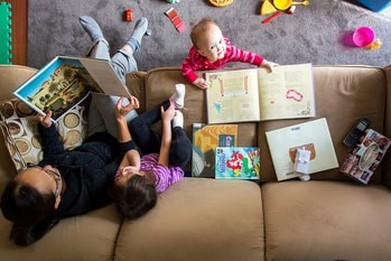
 RSS Feed
RSS Feed
